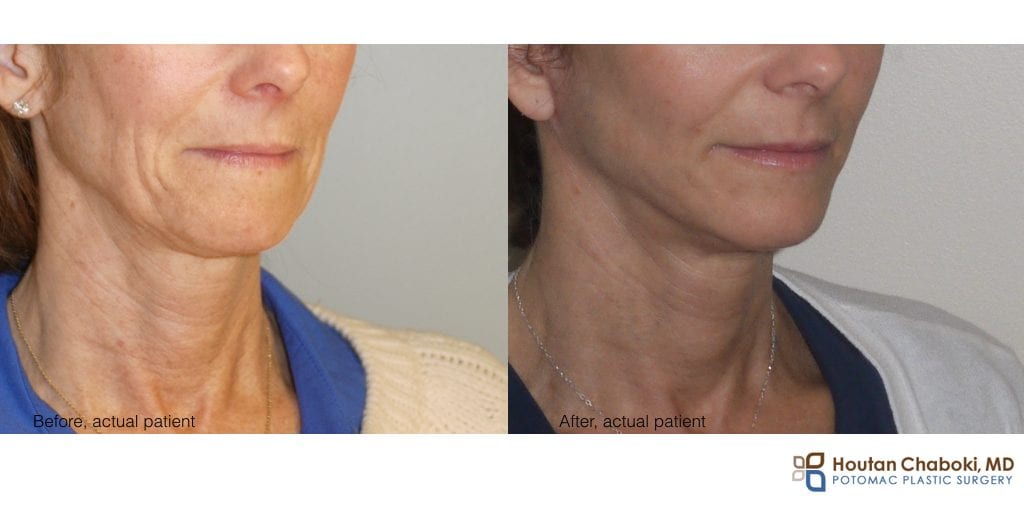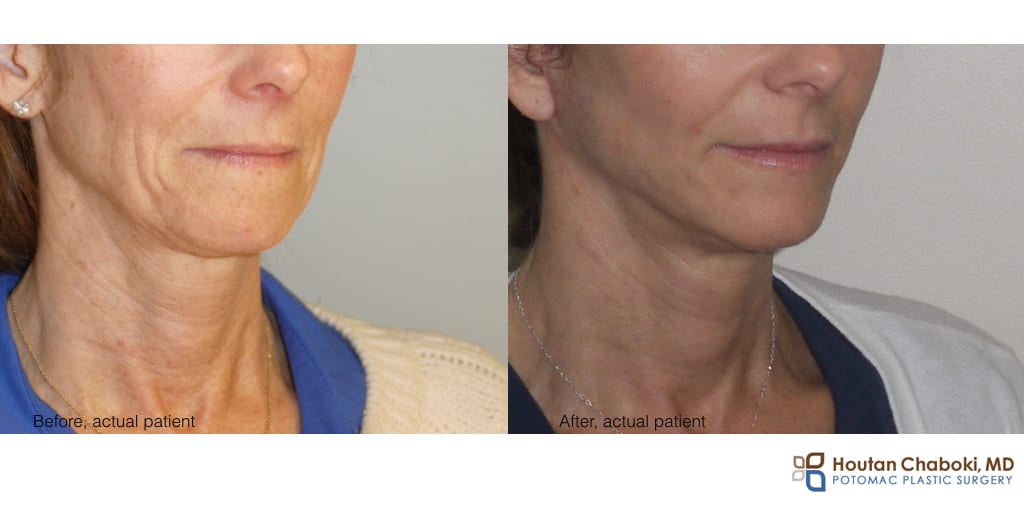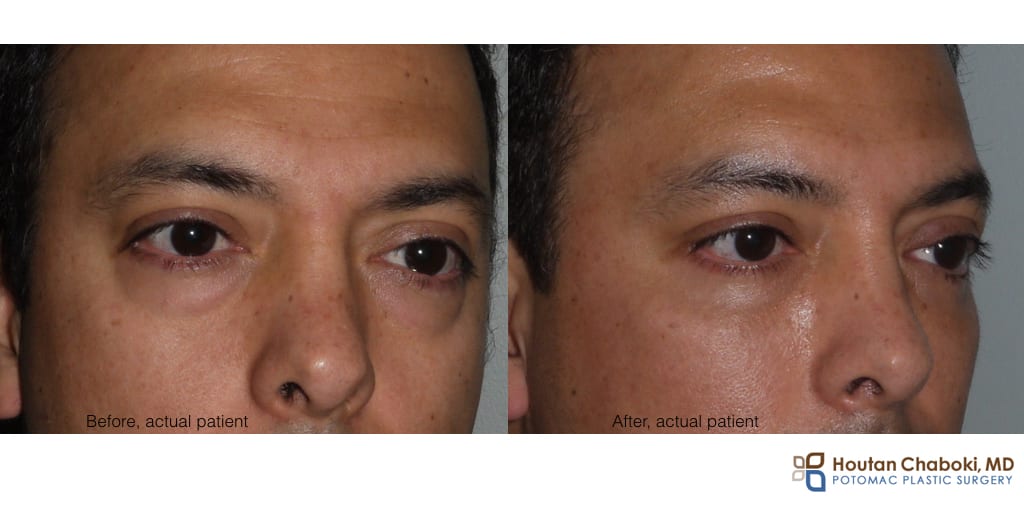Fat transfer, also known as fat injection, is a popular option to rejuvenate the face, breasts, and buttocks. Patients like fat transfer procedures, since it uses one’s own fat to naturally augment a specific area. Fat transfer is a quick procedure, which may be performed by itself or combined with other procedures.
What is the difference between fat transfer and fat injection?
Cosmetic procedures with fat use many terms. All cosmetic surgery that includes placing fat into the face are essentially the same procedure. Fat is taken from one area via liposuction (ex. abdomen), then placed in another area that needs augmentation (ex. cheeks). Terms that plastic surgeons may use include fat injection, liposculpture, fat transfer, autologous fat grafting, micro fat graft, and fat augmentation.
Fat transfer has been used for years, but now some plastic surgeons are referring to the procedure as “stem cell facelift”. Being living tissue, fat may have some additional qualities beyond the volume enhancement due to its stem cells, which are not well understood at this time. Stem cells, which can normally be found in fat tissue, may potentially play a role in regenerative medicine. Any possible stem cell effect is currently anecdotal, and not objectively or reproducibly measurable. We’ll investigate stem cells in plastic surgery in future blog posts.
Why would one consider facial fat transfer?
The facial aging process is multidimensional. Facial fat grafting is normally performed in patients who are older than 30, either alone or with other facial plastic procedures, as the signs of aging start to appear. The physiology of natural aging includes atrophy or loss of facial volume that fat may help restore. Some fat is gradually lost in the face with age. Getting older is not just sagging skin or gravity, but shrinking of tissue as well. Some patients may also have accelerated facial fat loss outside of natural aging, for example in athletes, stress, or certain medical conditions.
The patient above had facial fat transfer, along with a lower facelift lift and neck liposuction. Fat was injected into the lips, cheeks, and lower eyelid areas which enhanced the results of a facelift. Many plastic surgeons will combine facelift with fat injection due to the multi-component factors associated with facial aging (i.e. skin laxity and volume loss).
The patient below had facial fat transfer, along with lower eyelid surgery (blepharoplasty). Fat was reduced from the eye bags, but also injected into the upper cheek to help reduce dark circles and improve the appearance of the eyes naturally. Lower eyelid surgery may or may not require fat injection, depending on the degree of facial aging and etiology of the dark circle.
How is fat transfer different from facial fillers?
Facial fillers are injectable gels that provide a non-surgical option for patients who prefer office treatments. Examples of facial fillers include Restylane®, Juvederm®, and Belotero®. Facial filler injections are performed in the office with local anesthesia. Results are temporary, lasting approximately several months to a year, depending on the specific material and area treated. Bruising and swelling is often minimal and short-term, with patients returning to daily life pretty quickly.
Fat transfer is a little more involved procedure, as compared facial fillers. It’s commonly performed via local anesthesia combined with IV sedation or general anesthesia. There is typically more swelling or bruising as compared to facial fillers, but results are longer-lasting and possibly permanent. In addition, there is the potential, poorly understood benefit of stem cells from the fat.
Fat transfer has a certain level of unpredictability. Being living tissue, some of the transferred fat does not survive in its new environment. A variable amount of the transferred fat is absorbed over time. Some patients will still require repeat cosmetic treatments after fat transfer due to a variety of factors, including natural fat loss and the aging process.
How is facial fat transfer performed?
Fat is gently obtained from your abdomen, thighs, or hips via liposuction. Most patients have sufficient fat volume in these donor areas for facial rejuvenation. Fat transfer procedures do not require a lot of fat volume. In fact, there is only so much fat that the recipient areas in the face can accept at any one time. Next, your fat in placed in the desired areas, typically the lower eyelid area, cheeks, smile lines, and lips. Other areas where fat has been injected by cosmetic surgeons include the chin, upper eyelid, brow, and temple.
There are many techniques and differences with specific method, but essentially plastic surgeons want this fat tissue to live in its new environment. Plastic surgeons use a variety of purification methods to help maximize the amount of fat that survives the transfer, such as gentle handling.
So am I a good candidate for facial fat transfer?
You’re more likely to be a good candidate if you have some of the qualities:
- sunken cheeks
- lower eyelid bags or dark circles
- thin lips
- undergoing a facelift, eyelid surgery, or other cosmetic surgery
- only want natural, living tissue to rejuvenate your appearance
- have sufficient recovery time after the procedure
- good general health and reasonable expectations
We previously reviewed how fat transfer compliments and enhances the results of face lift surgery in a previous blog post. Speak with a facial plastic surgeon to determine if a fat graft procedure is appropriate for you.
Have you considered facial fat transfer? Please share your thought and questions below.




Is the face considered as one area of fat grafting or more?
Thank you for reading the blog!
Plastic surgeons will consider multiple areas of the face for fat grafting. Facial areas considered include the cheeks, temples, upper and lower eyes, smile lines, and lips. The chin and jawline may also be treated as appropriate.
Best,
Hello I am visiting Australia for a few days, trying to get a filler with my own fat in neck and face. Could you give me some information about that. I will be here just few days more. Thanks a lot.
Thank you for reading the blog! Fat is typically not placed in the neck. The face, however, is a common treatment area for fat transfer. More information on fat transfer can be found here or in our Photo Gallery.
Best,